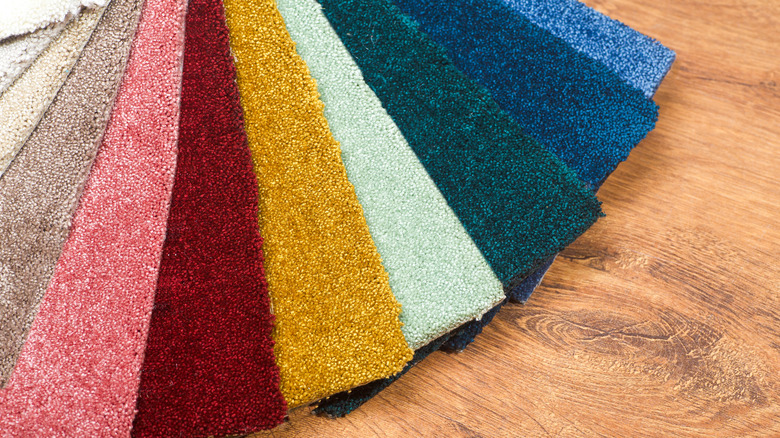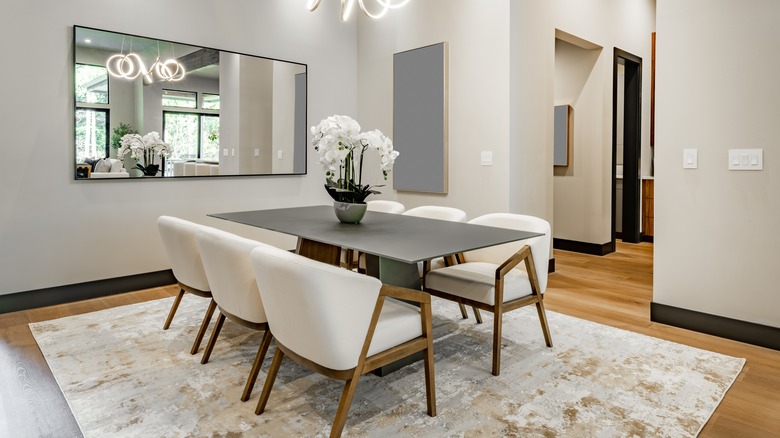Should You Put An Area Rug On Carpeted Floors?
On one hand, if you've spent the time and money to invest in really good wall-to-wall carpeting, which perfectly matches your décor and lends coziness and charm to your room, you may want to stick with that. On the other hand, not everybody has the carpet they prefer. Rental units come to mind, with floor covering that's often adequate but hardly inspirational. In this case, adding an area rug can infuse your interior with color and style. If the carpet is good but worn or stained, using an area rug could be the solution needed until the whole carpet can be replaced. Using an area rug in this case is a budget-minded way to keep the interior presentable.
Should you place an area rug on a carpeted floor? We vote yes in the two examples above, and more, you should place an area rug anywhere in your home that needs an extra touch to make the interior more attractive or comfortable, or just more you. Keep in mind though, while you're busy adding texture and flair to your room, there are a couple of rules designers use to guide the process, so your room doesn't look like a carpet bazaar, and also to get the most out of your area rug.
Size and scale
When adding an area rug, there are several steps to consider. The first is size. You don't want the area rug to cover up the entire room, but you don't want a rug that looks too small for the space either. The key here is scale. An area rug is just that – it's a rug for an area. Placing one under your dining room table helps define that area as an eating space. Just be sure there's about two feet of rug laid out past the edge of the table on all sides. Same for a bedroom. Often an area rug is placed under the bed. Again, be sure the rug extends past the edges of the bed, so it creates a frame or border for the eye.
Then there's thinking outside the box. Play around with the position of your rug. A smaller rug in a large room especially set on a diagonal might look better than a square couch on a square area rug in a square room. Similarly, a smaller rug might help define a desk area or bar cart in a larger room. Pay attention also to the pattern of the area rug. If you already have a lot of pattern in the room a plain rug will work better than yet more pattern. Alternately, if most of the room has plain fabric, curtains, etc., a patterned rug will really pop.
Consider the trip factor
Another important consideration is the trip factor a rug on carpet could create. Experts indicate the best way to prevent a rug from bunching up or wrinkling is to use a rug pad between the carpet and the area rug. The pad will give the area rug a foundation to grip so it won't slip or otherwise move around. Another way to anchor an area rug under a furniture grouping is to place at least two legs of each chair or the couch on the rug, essentially pinning it in place.
Pile is a factor here as well. If you have low pile (short) carpeting, use a non-slip pad under a rug with a similar pile. Contrast works here as well. If the carpeting is low pile, placing a plush area rug on top will give the room a rich, inviting texture. Similarly, if your carpeting has higher pile, using a pad keeps the rug in place, but here use a low-pile area rug or colorful flat Berber rug to prevent slipping and potential trips or falls. Area rugs (and pads) come in squares, ovals, circles, and more and can be layered in your interior for style, safety, and convenience.


